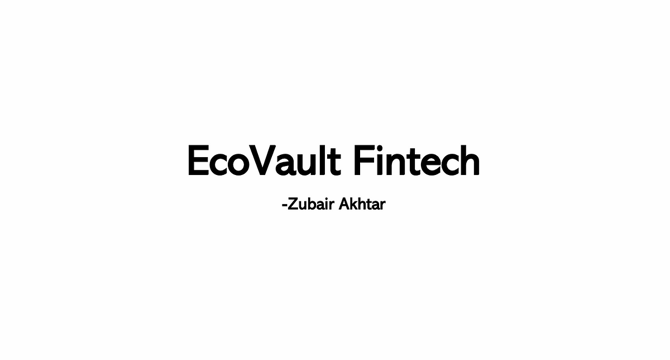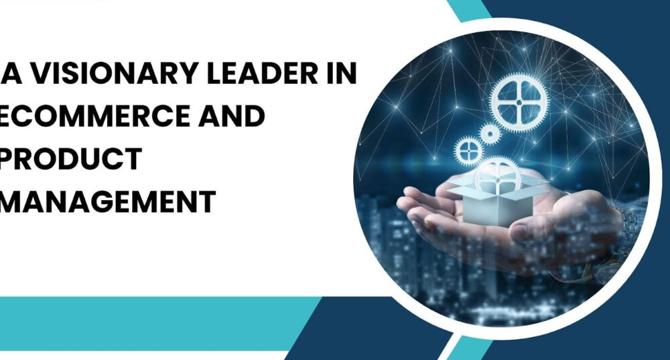Product Management News
Medium
281

Image Credit: Medium
In The Big Lebowski, there’s a moment where the MacGuffin — the rug the Dude is trying to retrieve…
- The aesthetic-usability effect demonstrates that visual appeal can enhance perceived usability and user adoption in applications.
- Enterprise application stickiness should be measured by task efficiency rather than metrics like MAUs or DAUs.
- Efficient enterprise software focuses on supporting goal completion through intuitive design, not prolonged user time within the app.
- Good enterprise software provides clear starting points and entry cues to guide users effectively.
- Effective enterprise systems should guide users intuitively during complex workflows, reducing uncertainty and enhancing confidence.
- Users take action in enterprise software when the message is timely, relevant, and clear, similar to a conversation.
- A conversational UI in enterprise software involves structured, contextual exchanges to guide users like a dialogue.
- Designing enterprise software with clear signals and prioritized notifications guides users effectively through workflows.
- Involving users throughout the product development life cycle is crucial for creating user-friendly cues and flows in enterprise software.
- Understanding customers' goals, context, and behaviors is essential for designing cues and flows that feel natural and helpful in enterprise software.
Read Full Article
16 Likes
Medium
371

Image Credit: Medium
Balancing Innovation and Responsibility: Ethical Frameworks for Integrating AI Agents into Product…
- AI agents are transforming product management by streamlining tasks like predictive analytics, customer sentiment analysis, and demand forecasting.
- The rapid adoption of AI agents comes with challenges such as bias, transparency issues, accountability concerns, and privacy risks.
- Ethical frameworks are crucial for guiding the integration of AI agents, ensuring innovation is balanced with responsibility.
- Key ethical challenges include addressing bias, transparency, accountability, and privacy in AI agent integration.
- To mitigate biases, product teams should conduct regular bias audits and focus on fairness to prevent inequities in AI-driven decisions.
- Explainable AI models enhance trust by clarifying the reasoning behind AI decisions to product teams and stakeholders.
- Human-in-the-loop oversight ensures AI supplements human judgment rather than replacing it, maintaining accountability and aligning with business objectives.
- Establishing ethical AI policies covering data governance, bias mitigation, and accountability structures is essential for responsible AI usage.
- Product managers can take practical steps like collaborating with experts, phased AI implementation, stakeholder communication, and continuous monitoring to ensure ethical AI integration.
- Balancing innovation and responsibility in AI integration is vital, and ethical frameworks will be a competitive edge in product management, fostering trust, efficiency, and sustainability.
Read Full Article
22 Likes
UX Design
213

Image Credit: UX Design
How to write surveys that actually work: lessons from Strava
- Strava, with 150 million users and a 4.8-star rating on iOS, is a popular fitness app known for its Language Network Effect and Data Network Effect.
- The app retains users with years worth of activity data and progress charts, creating a defensible moat for the business.
- A research survey landed in the inbox of the author, Rosie Hoggmascall, prompting her to reflect on her relationship with Strava over the past 7 years.
Read Full Article
12 Likes
Medium
290

100 Traits of a PM: #9 — Big-Picture Thinker: Lessons from Bezos, Jobs, Zuckerberg & more
- 1. Jeff Bezos saw Amazon as the everything store, not just a book-selling platform.
- 2. Steve Jobs aimed to reshape the music industry with the iPod, introducing a new economy.
- 3. Dhirubhai Ambani used Vimal as a foundation to build Reliance Industries, not just a clothing business.
- 4. Mark Zuckerberg envisioned Facebook as a powerful micro-targeting ecosystem from the start, leading to Meta's widespread influence.
Read Full Article
17 Likes
Discover more
- Programming News
- Software News
- Web Design
- Devops News
- Open Source News
- Databases
- Cloud News
- Operating Systems News
- Agile Methodology News
- Computer Engineering
- Startup News
- Cryptocurrency News
- Technology News
- Blockchain News
- Data Science News
- AR News
- Apple News
- Cyber Security News
- Leadership News
- Gaming News
- Automobiles News
Medium
378

Image Credit: Medium
Facilitator’s Notes — Did Not See That Coming
- This scenario highlights the importance of responding and adjusting over sticking to a plan, emphasizing the need for quick learning and adaptation.
- Encouraging customer collaboration and co-creation of value upgrades is crucial to building sustainable pricing strategies that customers are willing to pay for.
- Emphasizing continuous delivery of incremental value is essential to maintaining customer trust and momentum, even in the face of pricing challenges.
- Transparency and alignment among different organizational functions such as Sales, Finance, and Product are vital for effective decision-making and navigating uncertainties.
Read Full Article
22 Likes
Medium
249

Image Credit: Medium
Why I Create Products, Not Just Programs
- Creating products involves developing software that is convenient, useful, reliable, easy to maintain, and scalable, rather than just focusing on clean code.
- Pet projects, which entail limited resources like time, budget, and team support, help developers grow by making decisions beyond writing code, such as architectural and product-related choices.
- Engaging in pet projects shifts developers from just coding to considering various aspects like product impact, timelines, cost-effectiveness, and success, fostering a holistic approach towards software development.
- Participating in individual pet projects alongside team collaborations enables developers to evolve from programmers to creators of products, instilling a focus on addressing real-world problems and delivering effective solutions.
Read Full Article
15 Likes
Medium
90

Image Credit: Medium
Part 2: Bridging Product and Technology with the CPTO role
- The CPTO role at Zafin serves to drive alignment between vision, execution, and customer value in a technical and regulated space.
- Combining the CTO and CPO roles has helped in better serving customers and moving faster in the market at Zafin.
- Challenges of the CPTO role include managing breadth, stamina, context-switching, and balancing vision with execution.
- Strategies for managing challenges include investing in strong leaders, maintaining self-awareness, and creating balanced dynamics.
- The role requires fluency in both product and technology languages to align various stakeholders towards a unified narrative.
- Constant prioritization and decision-making, as well as avoiding becoming a bottleneck, are key aspects of the CPTO role.
- Creating autonomy, defining clear decision-making processes, and enabling momentum are crucial for effective leadership in the role.
- Combining product and technology leadership has led to increased agility, consistent execution, and a culture of product vision and technical excellence at Zafin.
- The CPTO role reflects the evolution of product development towards integration, suggesting its increasing relevance in tech-driven enterprises.
- Tight partnership between product and engineering is crucial for success, emphasizing the value of unity in driving customer needs and technical feasibility.
Read Full Article
5 Likes
Medium
217

Image Credit: Medium
Product Notes by Sai — From Code to Customers
- Started career as a Software Development Engineer in an e-commerce company after completing degrees in computer science.
- Realized interest in customer perspective and transitioned towards product management.
- Found a passion for understanding user pain points and crafting solutions that make a difference.
- Emphasized the importance of blending technology with purpose in product management.
Read Full Article
13 Likes
Medium
185

How to Turn Vague PM Feedback into Career Fuel
- When receiving vague feedback, treat it as valuable data instead of disregarding it.
- Request specific examples to understand the feedback better and log everything in a Feedback Log.
- Translate vague feedback into SMART goals and track progress using a Growth Tracker in Notion.
- Continuously review achievements and update processes based on lessons learned to show improvement over time.
Read Full Article
11 Likes
Medium
354

Product Analyst Interview Experience at Zomato
- Zomato's Product Analyst interview process consisted of aptitude and SQL questions, focusing on window functions and datetime operations.
- Interviewers asked scenario-based questions and SQL query-writing questions, emphasizing familiarity with the resume content.
- The interview rounds included discussions on projects, puzzles, a geometric probability problem, and a case study on a return policy's impact on Flipkart.
- The final round involved an in-depth focus on product thinking, Root Cause Analysis scenarios, and product problem-solving around Zomato, with an emphasis on structuring and justifying assumptions.
Read Full Article
20 Likes
Medium
244

From Code to Customer: Why Software Engineers Make Great Product Managers in the Age of AI
- Engineers with a strong grasp of systems and users are well-suited to develop impactful AI-powered products.
- Product managers in the AI era need to understand technical feasibility, scalability, and ethics, making engineering skills valuable in product conversations.
- Engineers excel in breaking down complex problems, bridging technical and business communication, and respecting the build process in product management roles.
- The best product leaders in the age of AI will be those who can think in systems and communicate effectively with both technical and non-technical stakeholders.
Read Full Article
14 Likes
Medium
204

Image Credit: Medium
"The Internet Is Broken — Can We Fix It?"
- The article discusses the broken state of the internet, highlighting issues like surveillance capitalism, platform monopolies, algorithmic tyranny, and digital decay.
- It emphasizes the need to reclaim the internet and explores movements like Web3, Privacy by Design, AI with Morals, Digital Literacy, and the Indie Web aiming to rebuild it from the ground up.
- The vision for a new internet includes concepts like data ownership, privacy, ethical AI, and community-owned networks, fostering a sense of belonging and creativity.
- The article suggests ways for individuals to contribute to fixing the internet, such as using open-source tools, reclaiming data, supporting decentralized projects, and advocating for change.
- It calls for designing a better digital future focused on ownership, transparency, resilience, creativity, and humanity, envisioning the internet as a source of knowledge and community.
- The concluding message is hopeful, stating that while the internet is broken, it can be fixed through collective action, conscious choices, and a shift towards building a more ethical and user-centric online space.
Read Full Article
12 Likes
Medium
136

Image Credit: Medium
Zubair’s Product Portfolio
- Zubair developed EcoVault, a digital wallet and savings app that rewards users for saving money by planting trees and supporting sustainable initiatives.
- The product is designed for a future where ethical finance and climate responsibility are essential, aiming to appeal to Gen Z and Millennial Europeans.
- Key features of EcoVault include impact dashboard, referral system for virality, and monetization through carbon offset marketplace and institutional green investments.
- The product is fully aligned with EU regulations, features a compliance timeline, and aims to provide a mission-driven, eco-friendly financial experience.
Read Full Article
8 Likes
Producttalk
440

How to Choose the Right Pilot Teams for a Product Operating Model Transformation
- To kick off an organizational transformation, start with pilot teams to avoid chaos and learn as you go.
- Choosing two to four pilot teams is recommended depending on the organization's size and complexity.
- Factors to consider when selecting pilot teams include team relationships, willingness to learn, existing skills, access to target customers, and product lifecycle stage.
- Team members should have mutual respect, familiarity, and compatible working styles for effective collaboration.
- A growth mindset and openness to learning are essential qualities in team members for successful transformation.
- Select teams with diverse skills that complement each other and avoid overwhelming beginners with new concepts.
- Access to target customers is crucial for continuous discovery, and organizational barriers should be addressed to facilitate customer interaction.
- Pilot teams should focus on products in the 'explore' or 'invest' stage to maximize learning potential.
- Choosing pilot teams wisely can help surface organizational challenges and set a positive example for product operating model transformation.
- Supporting pilot teams through challenges and ensuring perseverance among team members is vital for successful implementation.
Read Full Article
26 Likes
TechBullion
267

Image Credit: TechBullion
Keshav Agrawal: A Visionary Leader in eCommerce and Product Management
- Keshav Agrawal is a distinguished leader and Senior Director at a top 3 US Retailer, known for his innovative contributions to eCommerce and product management.
- His professional journey includes significant roles at companies like Quantcast Corporation and Deloitte Consulting, leading to his impactful position as Senior Director of Product, Core Search Experience at his current organization, where he drives product innovation.
- Keshav Agrawal's leadership style emphasizes curiosity, transparency, ownership, and rapid learning, resulting in notable achievements such as the development of AI-powered systems that enhance user experience and increase add-to-cart rates.
- Apart from his professional success, Keshav Agrawal has authored research papers in engineering journals and is set to continue shaping the future of eCommerce through his work in AI, machine learning, and digital product management.
Read Full Article
16 Likes
For uninterrupted reading, download the app